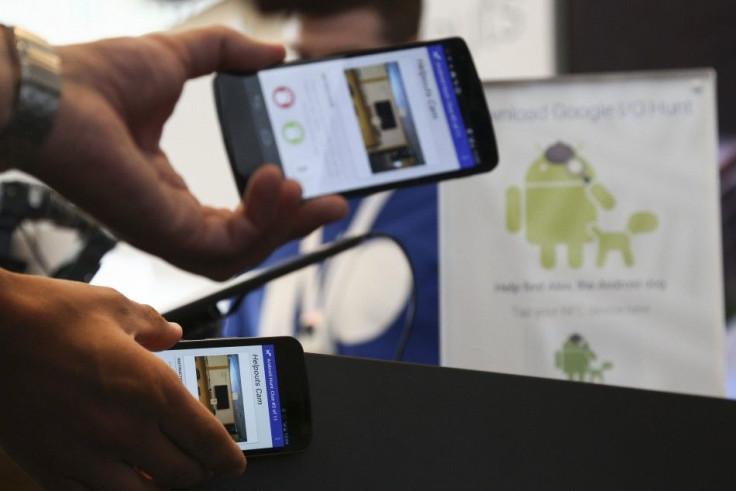HTC Desire 816 vs. Moto G – Specifications, Features and Price Showdown

The 2014 Motorola Moto G (4G LTE) variant was released in June, whereas the HTC Desire 816 was released in March. Moreover, both the phones are budget-friendly and pack terrific features. Readers who are interested in the Moto G or the HTC Desire 816 should check out this specifications, features and price comparison.
Display, Exterior and Size
The HTC Desire 816 comes with a LG G3-like 5.5-inch Super LCD2 display bundled with 720 x 1,280 pixels screen resolution, whereas the Moto G features a relatively smaller 4.5-inch IPS LCD display with the same resolution as the HTC handset. The pixel density of Moto G and HTC Desire 816 stand at 329 ppi and 267 ppi respectively.
When it comes to exterior, the HTC Desire 816 comes with a glossy polycarbonate plastic exterior unlike the metallic look of the high-end HTC One M8. Nevertheless, the matte effect surrounding the corners of the phone provides a solid, appealing look to the handset, according to Trusted Reviews. The Moto G, meanwhile, comes with a sharp HD display that stretches from edge-to-edge to all corners of the handset. Moreover, the Motorola handset comes with a plastic body.
For extra protection, 2014 Moto G (4G LTE) variant comes with a water-resistant coating protecting the phone inside and outside. It is worth noting that, the protection is just a coating and hence there is no IP67 certification.
The thickness and the weight of HTC Desire 816 are 0.31 inches and 165 g respectively, whereas the Moto G is 0.46 inches thick and weighs 143 g.
Hardware, Software and Memory
Surprisingly, both Moto G and Desire 816 are powered by the same quad-core (Qualcomm Snapdragon 400) Cortex-A7 processor. However the Motorola device is clocked at 1.2 GHz and houses 1 GB of RAM, whereas the HTC device is clocked at 1.6 GHz and features a much-better 1.5 GB of RAM.
In addition, both the phones run on Android OS v4.4.2 KitKat, which is upgradeable to higher versions. When it comes to memory, the Desire 816 offers 8 GB of internal storage and microSD card support for expansion up to 128 GB. The 2014 Moto G (4G LTE) comes with 8 GB or 16 GB of internal storage with microSD card support for expansion up to 32 GB.
Camera and Battery
The Motorola handset sports 5 MP rear-facing camera with LED flash and 1.3 MP front-facing shooter, whereas the Sony device features a whopping 13 MP rear-facing camera unit with LED flash and a surprisingly good 5 MP shooter in the front.
Furthermore, the HTC Desire 816 houses a solid Li-Ion 2600 mAh battery unit, whereas the Moto G houses a relatively inferior Li-Ion 2070 mAh battery unit. Both the batteries are not user-replaceable.
Moto G | HTC Desire 816 | |
Talk Time | 24 Hours | 21 Hours |
Stand-by Time | 336 Hours | 737 Hours |
Connectivity, SIM and Colour
Both the phones come equipped with Bluetooth v4.0, 4G LTE, Wi-Fi 802.11, and Wi-Fi Hotspot support. While the Moto G supports micro-sim, the HTC Desire 816 supports nano-sim. It is worth noting that, several variants of both the models support dual-sim. Also, the Desire 816 supports optional NFC, while the Moto G doesn't.
The HTC Desire 816 comes in black, white, red, gray, and green, whereas the Moto G comes with black/white front panel but the back panel is customizable with six different colour options.
Price
The HTC Desire 816 8 GB can be purchased at AU$379.95, while the 2014 Moto G 8 GB (4G LTE) model is priced at AU$299.95 in Australia.
Also Read
1. Samsung Galaxy Tab S (10.5-Inch) vs. LG G Pad (10.1-Inch) - Specifications, Features and Price Showdown - [Read]
2. HTC One E8 (Plastic Variant of HTC One M8) with 5-Inch Display, Dual-SIM, 801 Processor and 2 GB RAM to Hit New Markets Soon - [Read]
3. Dual-Sim Variant Samsung Galaxy S5 Duos LTE Available For $899 - [Read]




















